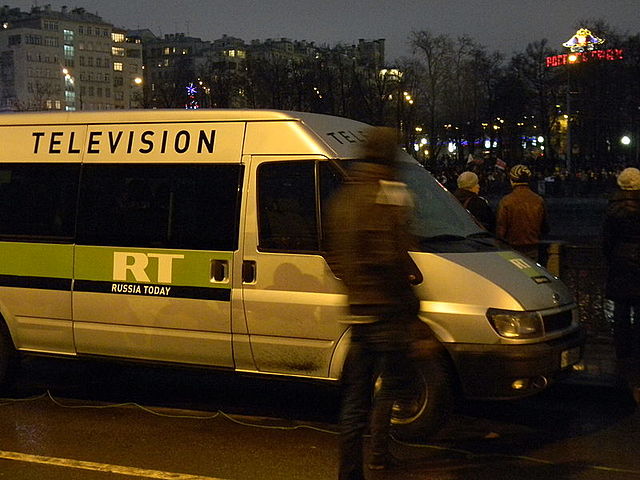Fears of trafficking and black-market sale of weapons shipped to Ukraine continue to make headlines. With billions of pounds in weaponry arriving in Ukraine – ranging from small arms and light weapons (SALW) to complex rocket artillery systems – outsiders have aired concerns over the weapons’ final destinations. However, the public concerns may constitute another tactic employed by Russia to dissuade Ukraine’s allies from continued support.
Coverage of Threats
Disturbing claims of misappropriation of donated weapons have sporadically made headlines from Russia Today (RT) to the Washington Post. The coverage has run along two, mutually inclusive trains of thought.
The first calls back to not-so-ancient history. The first leg of the Russian invasion, in Spring 2014, led to significant destabilisation in Ukraine’s east. Ukraine’s response to Russia’s invading ‘little green men’ was to send Atoshniki under the Anti-Terrorist Operation (ATO). The ATO, both legally and functionally led to the disputed areas – along Donetsk and Luhansk – being considered as ‘non-government-controlled areas’. The ATO was characterised by loose command and control, and critically, looser arms controls. The consequence was the emergence of Ukraine as a leading market for illicit weapons.
The sharp uptick in arms trafficking was accompanied by headline-grabbing seizures – furthering anxieties of a spill over effect into conflict-torn countries and the European Union (EU). Numerous large shipments of SALW bound for several conflict zones were detected. In 2017, Ukrainian companies were accused of circumventing weapons embargoes, allegedly shipping USD 169 million in SALW to South Sudan. Then, in 2016, the threat came to western Europe as Ukraine reported having captured a French national carrying with him a range of small arms and 150kg of explosives destined for France. Further investigation revealed the suspect’s intention to stage a series of attacks against Muslim and Jewish communities during the 2016 Euros football tournament in Paris.
The second angle in the media relies less on confirmed instances of trafficking and more heavily on rumours and speculation. An NBC report cited a small-scale Lithuanian non-lethal supplier to Ukraine who estimated only 40% of shipped weapons reached the frontlines in the early stages of the 2022 war. Months later, the report was repackaged by RT, citing a CBS claim that 70% of shipped weapons were misappropriated. The estimates are strengthened by members of the international community and even the pro-Ukraine bloc who have indicated that weapons, once shipped, may fall into a ‘big black hole’.
A Manipulated Truth?
The two narratives operate in tandem along a linear reasoning; a country struggling from endemic arms trafficking is being provided a near-limitless supply of weapons, thereby increasing the risk of arms trafficking. The train of thought then begs the question, what should be done? To Russia and Ukraine-sceptics, their response would be to stop the shipment of weapons to Ukraine. However, Russian interest in casting doubt over Western weapons shipments reflects its war interests far more than fears of weapons trafficking. The supply of SALW to heavy weaponry has enhanced Ukraine’s defence, with continuous support arguably giving Ukraine the upper hand. Considering Russia’s ulterior interest, statements by government figures and state media can be considered a tool of informational warfare – one of Russia’s most potent weapons.
An RT investigation demonstrates the instrumentalization of weapons trafficking fears in Russia’s greater information warfare strategy. The article – widely circulated on pro-Russian media and Telegram channels – claimed media investigators found darknet marketplaces offering weapons such as US-made FGB-148 Javelin Missiles and Switchblade kamikaze drones. However, BBC journalists followed up on the investigation with their own set of findings, finding a Ukrainian impersonator and photos of weapons that could be backdated several years and traced as far as Syria. Whilst weapons scams are not new to the darknet, the BBC article quoted experts raising suspicion over how RT found the transparently false marketplace. At best this represents poor reporting and at worst a deliberately staged investigation; the RT piece can be understood within the context of Russia’s disinformation push.
Disinformation may also be unintentional, a result of porous analysis. For instance, the discussion surrounding Ukraine as a historic marketplace for illicitly sourced weapons, though rooted in fact, fails to tell the full story, inclusive of recent reforms. The rise of weapons trafficking out of Ukraine – spurred by the 2014 war – was attributable to the decentralised Ukrainian ATO. However, in 2018 the ATO was overhauled and transformed into its current state – the Joint Force Operation (JFO). Not just a nominal change, the shift indicated a departure from outdated, bureaucratic Soviet military structures towards one advised by its NATO partners. The Soviet structure of the Armed Forces of Ukraine (AFU) – conducive to military decentralization, rampant corruption and fostering weapons trafficking – was a deliberate choice by former pro-Russian president Viktor Yanukovych, overthrown in 2014 and convicted of treason in 2019. The JFO and AFU at-large were commended for their significant reforms, particularly since the end of the ATO. Notably, the Russian military continues to operate a Soviet style force, suffering from endemic corruption and, therefore, hypothetically suffering from the same vulnerabilities it accuses Ukraine of.
Balancing Risk with Reason
These narratives – factual or otherwise – have found audiences across the world. Stories such as the suspicious RT investigation have readily spread from Telegram to Twitter to other news outlets of varying size and legitimacy. The discussion, largely absent of nuance, inspires two choices: stop shipments or ignore legitimate risk. However, researchers, reporters and policymakers alike share a responsibility to look beyond the binary and question, what can and should be done. Such is the tone struck by a US State Department memo released 27 October on countering illicit proliferation in the region. The memo asserts the importance of tracing and monitoring donated weapons where possible. An excellent first step, the memo removes the constraints placed on the discourse by the dominant binary logic by accepting the elevated risk of arms trafficking whilst citing the risk of peddling Russian disinformation.
Next, the focus must turn towards meaningful measures. So, what can be done? The fog of war renders efforts to maintain oversight over weapons use and movement difficult. Whilst end-use monitoring (EUM) measures may not be wholly effective – especially as the donors have limited in-country access – it is still vital. To this effect, the State Department’s recent constructive discourse allows the US and other donor states to heavily impress upon Ukraine the need to step-up monitoring efforts. No longer an ‘all-or-nothing’ view, the Ukrainian government can see continued and expanding weapons shipments as potentially predicated upon increased, coordinated EUM efforts.
Donor states can also take the initiative, pre-empting the Interpol Chief’s warning of potential increased circulation of weapons following the end of the war. Such efforts would create significant safeguards for regions and states most at risk for illicit firearm-induced violence. In fact, both Ukraine and its allies stand to benefit, both from increased vigilance and politically. Simultaneously recognising risk and discussing mitigation efforts, the discourse tackles Russian disinformation head-on and can serve to undermine the Russian goal of halting weapons transfers vital to Ukraine’s self-defence.
Elijah Glantz is a Research and Project Officer Assistant for RUSI’s Organised Crime and Policing research group. His research interests include criminal governance and illicit economies in conflicting and fragile states. He is an MSc candidate in Conflict Studies at the London School of Economics and holds a BA in Political Philosophy from Sciences Po.
Main Image Credit: FeelSunny, Wikicommons.
The views expressed in this article are those of the author and do not necessarily reflect the views of RUSI, Focused Conservation, or any other institution.



